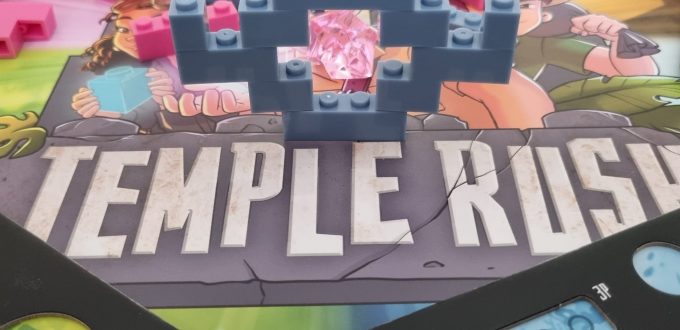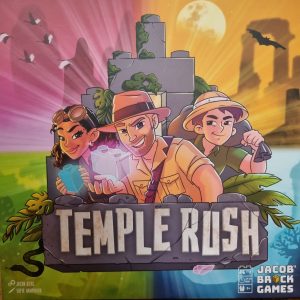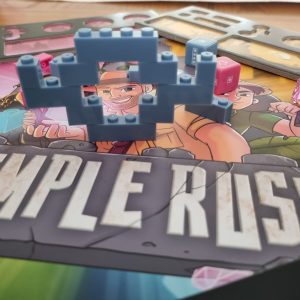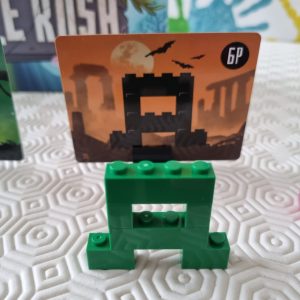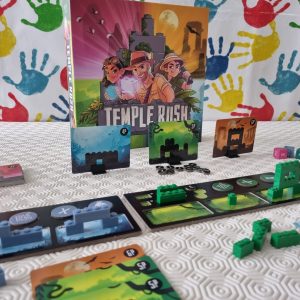Publisher: Jacob’s Brick Games, Blackrock Games, Hachette Board Games UK
Designer: Jacob Berg
Artist: Sophie Kampmark
Release date: 2020
2-4 Players
Age: 8+
30 mins
Favouritefoe score: 8/10
Learn More
* Dexterity *Building * Cognitive Skills * Dice Rolling * Card drafting * Dice Rolling * Social * Fun * Light *
Do you like building blocks? You know, those small, colourful, plastic bricks in rainbow colours. The ones that little kids love to leave all over the floor, and big kids can’t but help treading upon?! (Ouch!) Well, we definitely do. Castles, aeroplanes, fire stations, even a supermarket or two get constructed on the lounge floor on an almost daily basis.
But our approach is generally all hands on deck; build high, build strong, build together. Well, until recently, that is. Now, it is every constructor for themselves. We have transitioned from “team work makes the dream work” to “build better or buh-bye”! Yes, we have entered the world of competitive block building, and we aren’t looking back. Welcome, everybody, to Temple Rush!
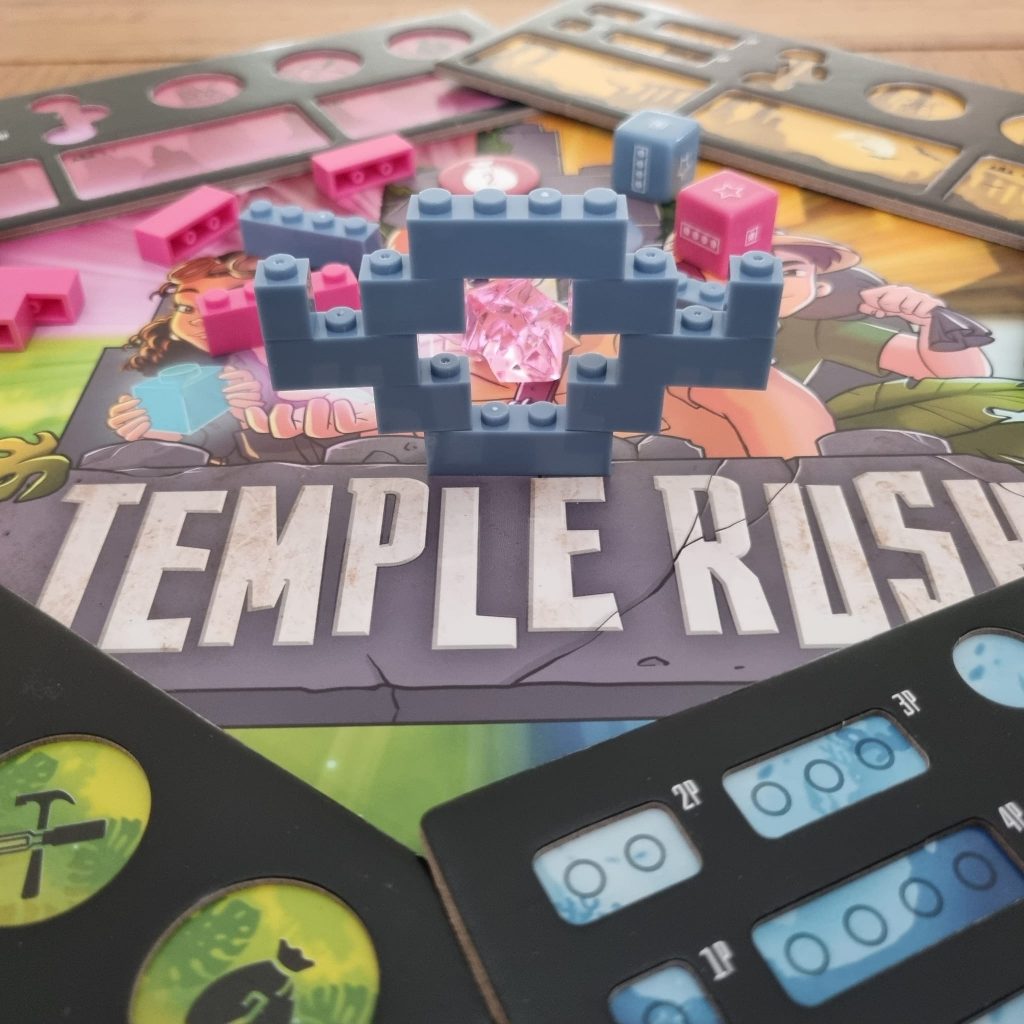
Temple me more……
Designed by Jacob Berg and published by Jacob’s Brick Games and Hachette Board Games UK, this is a racing game hidden behind a colourful wall of plastic bricks!
In Temple Rush, you are a champion builder from one of four Temple Kingdoms. And when the summer solstice hits, you are tasked with reconstructing ancient temples with only a small number of bricks. The temple designs themselves are found on cards which you are seeking to collect. And in this game, cards mean points. And what do points mean? Yup! You win the coveted pink diamond!
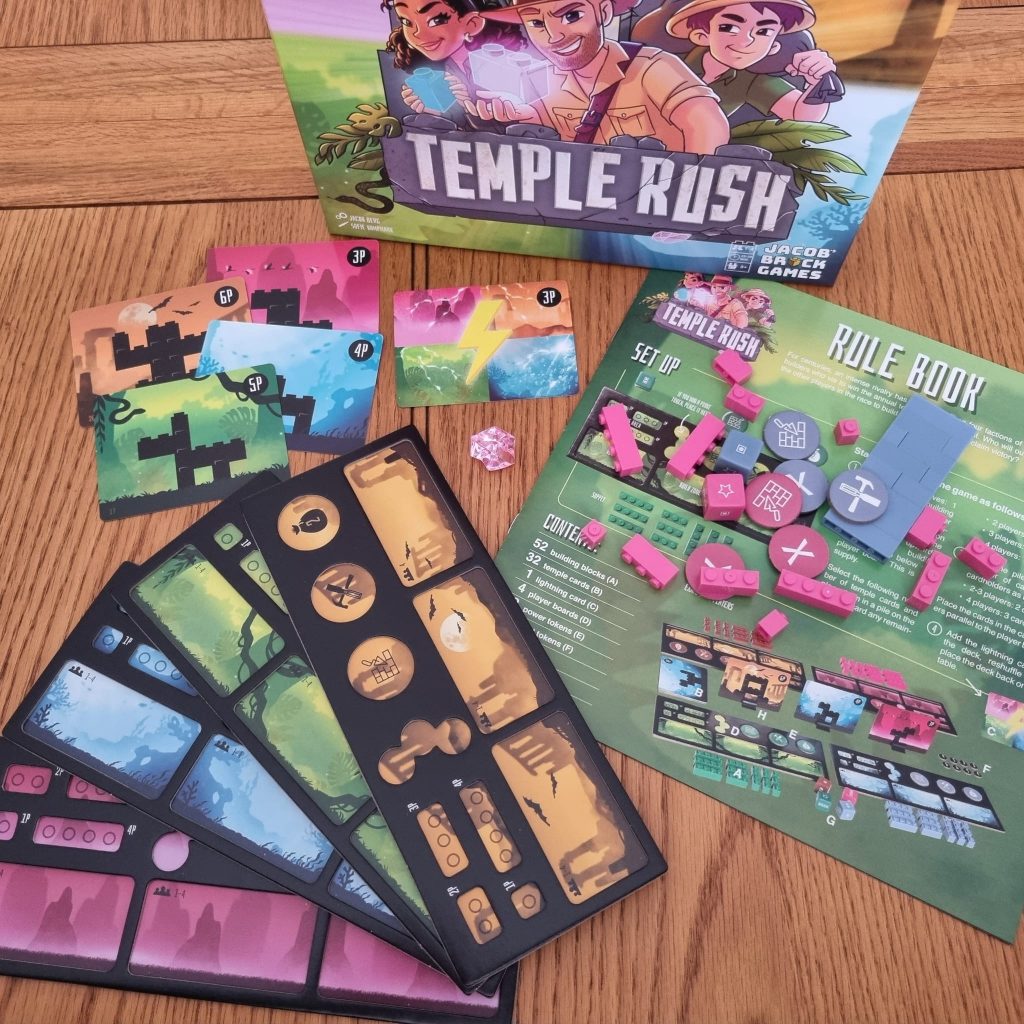
Stack ‘Em Up!
Setting up the game is easy. Everybody gets their own double thick player board which also acts as your personal construction zone. You also each get a set of 13 bricks (ranging in size from single blocks to those which are 4 blocks in length (think Lego but just don’t say it!), which are placed below your board to form your supply.
In addition, you receive 2 player tokens and a power token. The player tokens are bonus ways everybody has to boost their own building skills. The power token, however, is a randomly chosen tool that is kept secret and can range from stealing other player’s blocks to blowing up their temple altogether!
The temple cards are shuffled and, depending on player count, a number of them are added to the draw pile. 3 are then picked up and placed on the plastic holders; these are the designs for that round. Everybody can race to build the same ones, or different ones, and can go for as many as they think they will be able to complete that turn. As temples are worth different points, some will require more bricks and building skills than others, so choose wisely!
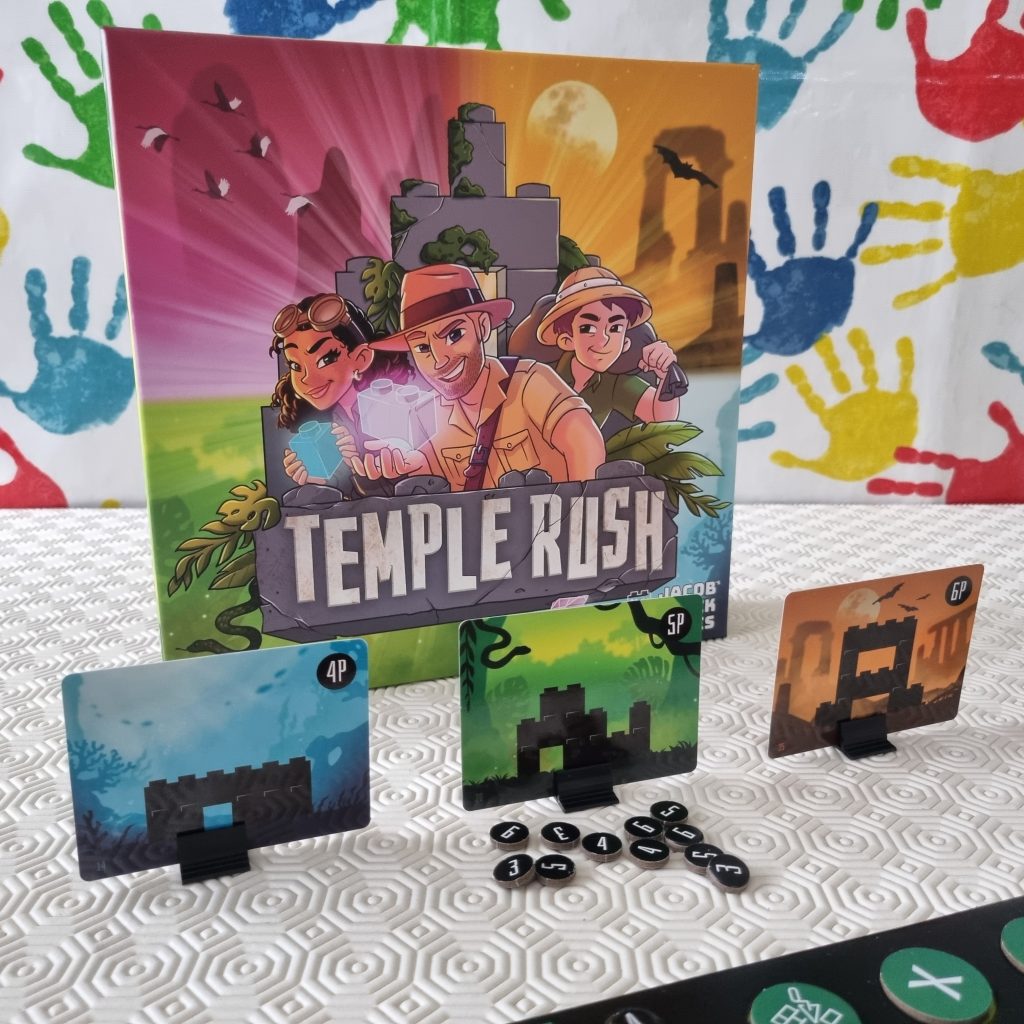
Pick a Brick!
Playing Temple Rush begins with one player rolling everybody’s coloured dice. And, as each D6 face shows either a block size, or a wild star, the block you get to use is in the hands of the temple Gods! Having picked the temple(s) you’re gunning for, you then place that block in one of the corresponding three construction zones on your player board.
Rounds continue in this way with rolling, selecting, and building. But, simply constructing a temple to match the outline of the design on a card isn’t exactly challenging. So, you have to be the first person to build it using your limited stash of blocks. And, there are rules!
To pass building control;
- Your temple must be built in the corresponding build zone on your board;
- You can’t move any blocks once set,
- Whilst you can start building any level of your chosen temple(s), you can only connect new bricks to those already forming part of your design(s) – no loose bricks!; and
- The blocks you utilise must come in the specific order that the fateful dice decrees!
- A mistake discovered during (but not after – see below!) construction may be addressed by swapping an incorrect block for a correct one from within your supply (or by using a power token – more on that below!).
Blimey, did somebody say “Temple tea-break”?

Completion Certificate or Permit Denied?
When you think you have matched what is printed on one of the cards with what is in the corresponding building zone, you shout “Temple Complete!”, and place your temple next to the card. If it matches, you keep the card (and will earn the points value printed on it at the end of the game). If anybody else managed to match their temple on the same turn, they get the equivalent point token which sits safely in a slot on their board.
Not so fast, smuggy-pants. If you correctly build a temple then you have to lose one of the used blocks by placing it into the bonus area on your board. Don’t worry, though, as it isn’t all bad building news! Those blocks will be worth points at the end of the game!
When a new card is placed in the vacant holder, if you didn’t manage to match the temple, you get a one-off building boon; you can take the bricks from the unsuccessful building zone, and either use them to try to replicate the temple on the replacement card, or return all the bricks to your supply. If the new temple can’t be built from the ruins immediately, then the blocks are returned anyway, and the new round begins!
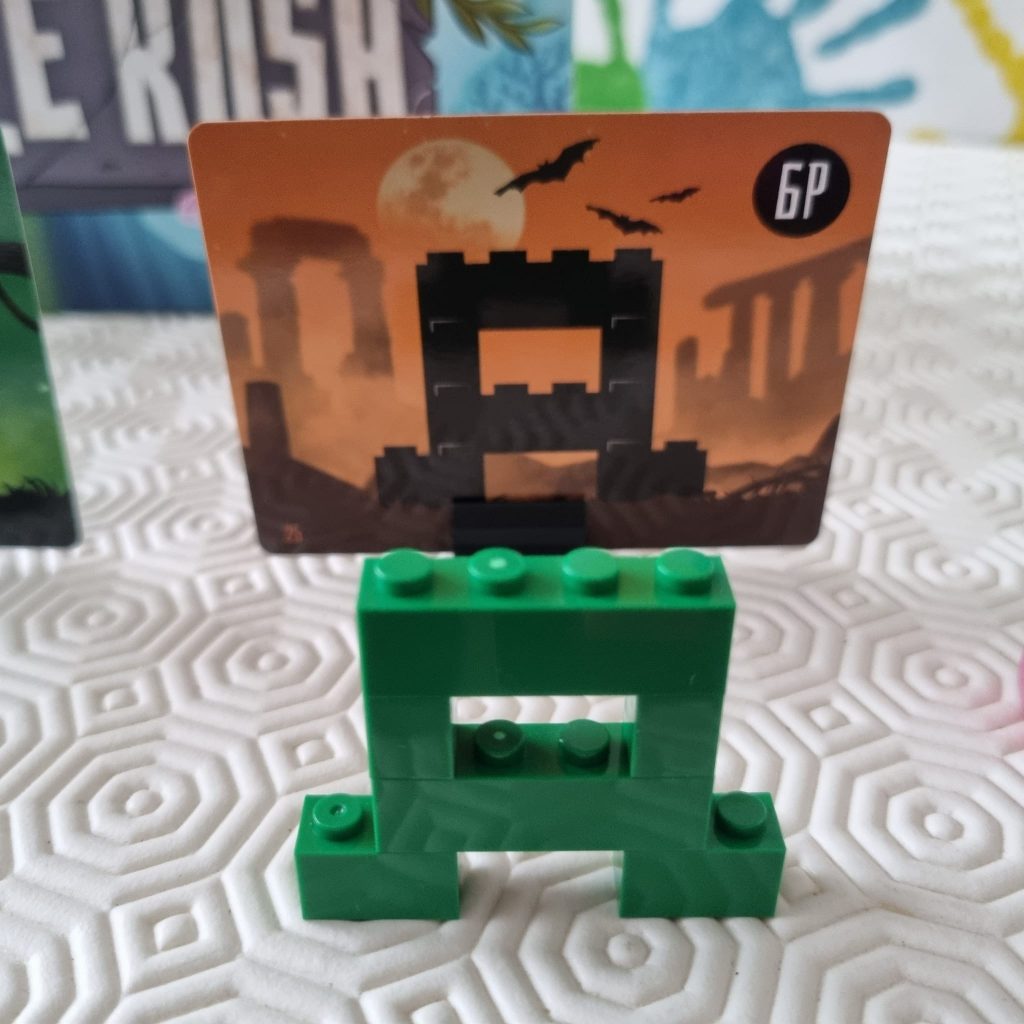
Condemned Construction!
Beware builders making promises they can’t keep! If you don’t follow your plans carefully, and another player inspects for faults, you could come a cropper. You automatically lose a block from your design back to your supply, and your unfinished temple will be cast back to its building zone!
Temple Rush continues until there is only one card remaining in the draw pile. Then players tot up their points from cards/tokens, unused power tokens, and bonus points from blocks in the bonus area. The player with the most points overall receives the pink diamond (and of course the respect of all the other constructors!)

Tools of the Trade
Now, if you’re struggling to get off the building line, there are a few tools at your disposal – three in fact! And they range from borrowing two top bricks from another player in order to complete your temple (“bag”), swapping a block (“hammer and chisel”), to having the chance to place loose blocks in a build zone (“mortar”). And you can use each of the three on your board once per game!
Lightning Fast
One final building opportunity will arise during the course of this game. When the lightning bolt card is drawn from the deck, there is a flash round. This means that everybody gets to use blocks from their supply to build the temple shown on the card that is immediately underneath the lightning bolt card. The winner is the first person to get their temple next to the card, and will win 3 bonus points. The temple card itself is discarded, and play resumes.

Temple-tastic?
Having played it a number of times now, we find Temple Rush to be a great fun, family game! And although light-hearted, it is not without pressure. Tension arises not only the racing element present throughout, but also the desire to create a correct temple each time. ShadowMeeple did not take messing up a 6 block design very well at all!
And I think this aspect is a great equaliser amongst differently abled players. Whereas younger builders are gung-ho in their attempts to create what is on the cards, us oldies are more afraid of botching the job. Pride precluding victory in some cases, and meaning that runaway leaders could be less likely to materialise.
Now, that is not to say that practical people with spatial skills are not at an advantage here. I am the worst person at visualising 3D objects from a 2D picture, and I do struggle with the trickier temples. Especially where my supply is low on certain sizes. But, for me, the challenge of deciding which bricks to use in each possible construction, and the race to be the first to do it, is what makes it fun. And that is even if do I suffer being shamed into last place every time by our 6 year old!
I would say that part of my struggle could also be the dexterity mechanism in this game. Having a hand disability can make picking up and pushing together small bricks quite tricky. But that is the nature of the game here. And, honestly, if I found it that difficult, I could easily sub with oversized blocks thanks to an enormous tub full of the things in Mini-meeple’s own toy collection.
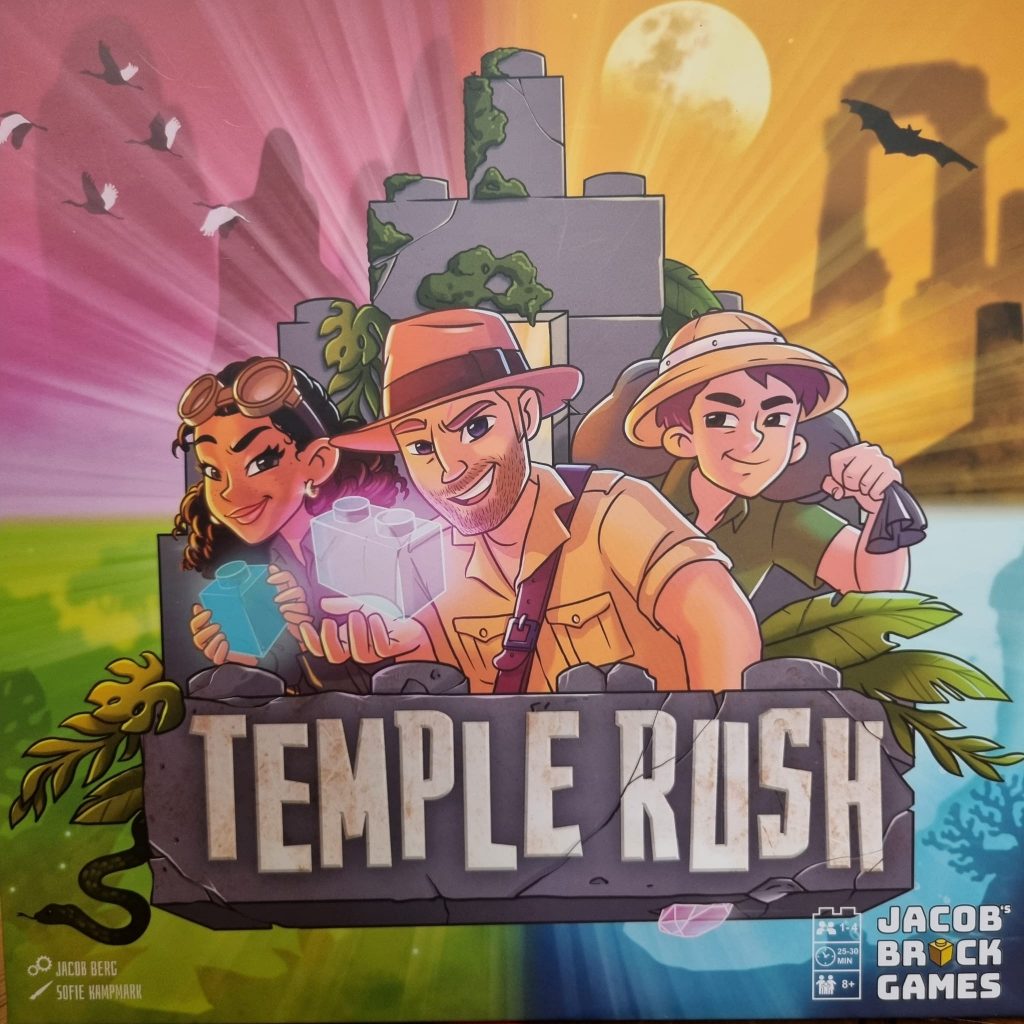
Constructive Components!
The colours in Temple Rush are in the most part vivid and vibrant (particularly on the temple cards). But there does seem to be mismatch in shade between the yellow board and matching components which are most definitely brown. Having said that, the double layered boards are super high quality, and cards are wonderfully glossy. The card holders also work well for the purpose of making it easier for everybody to see and compare their designs with the printed ones.

